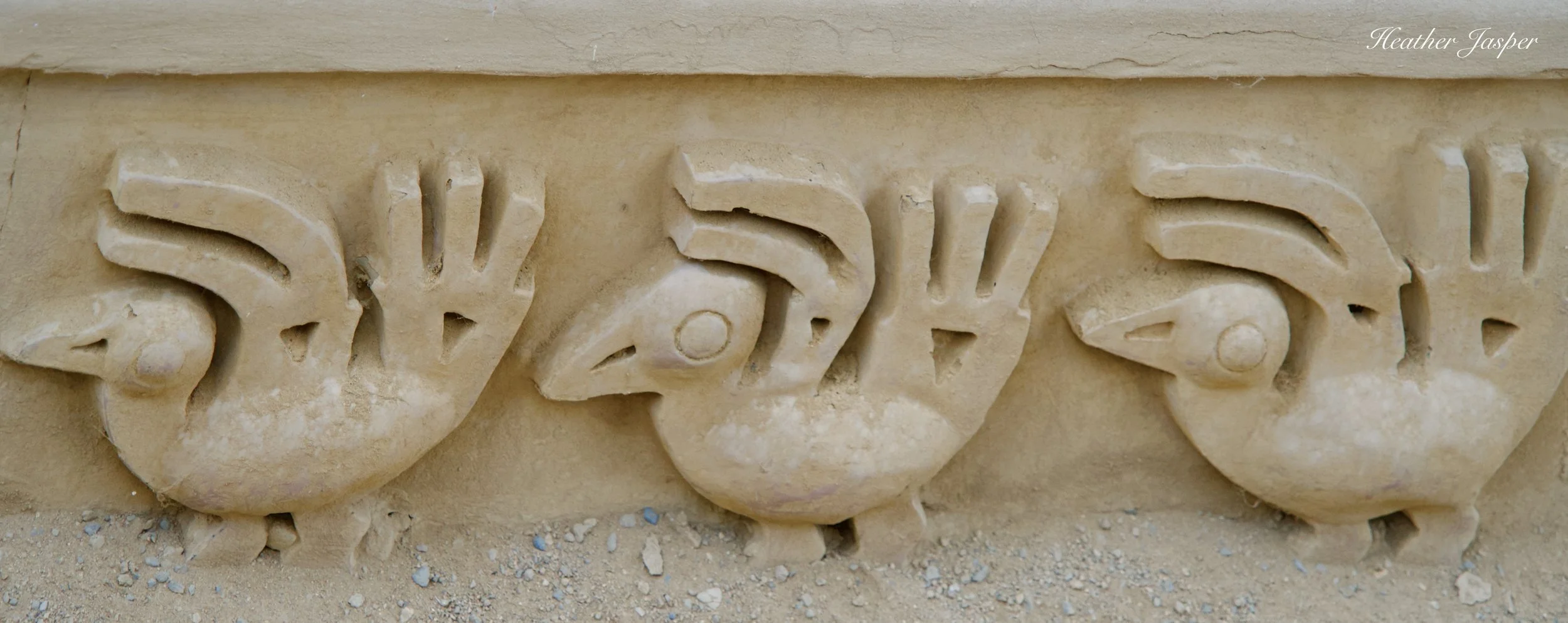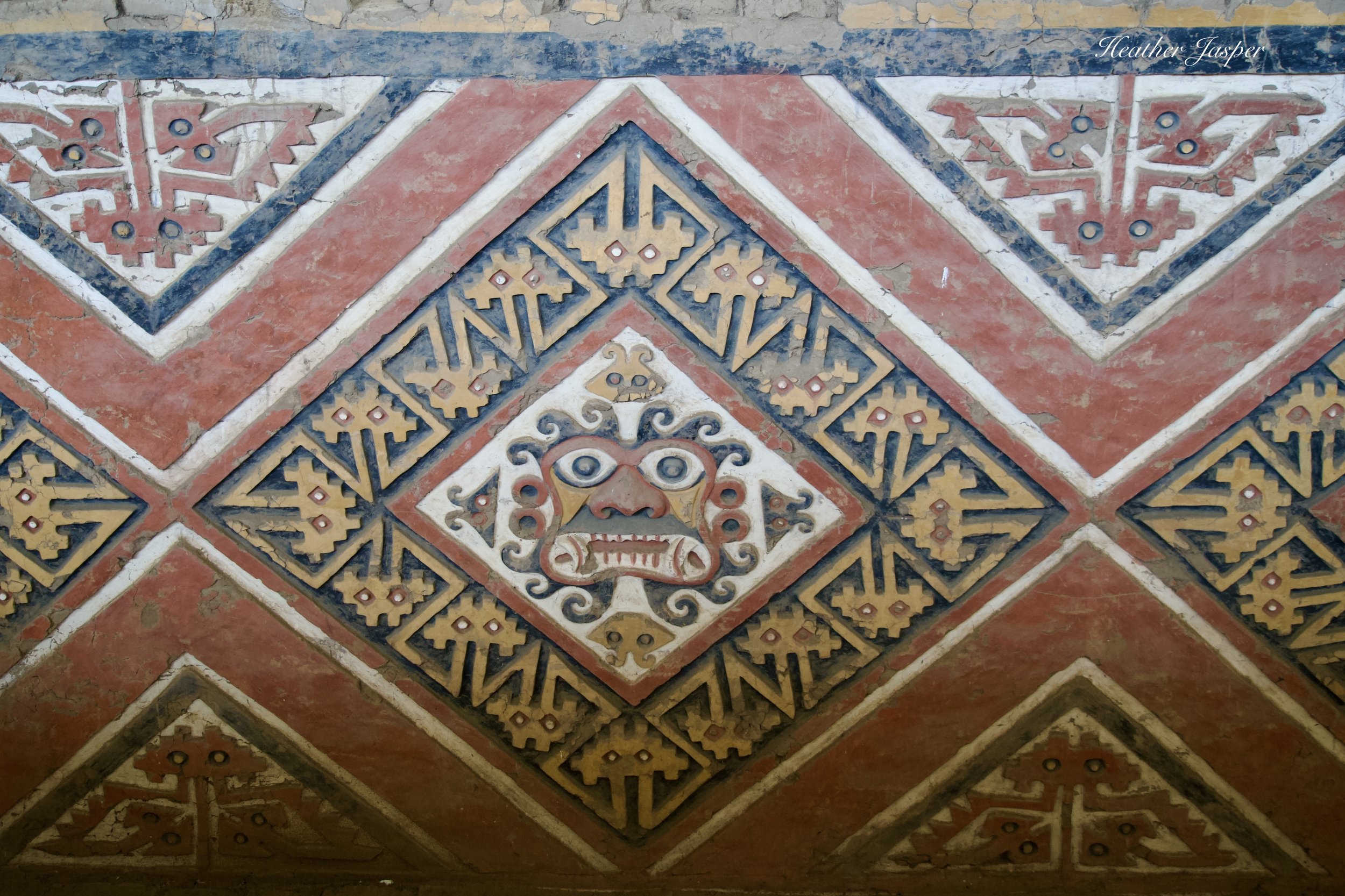Chan Chan & Huaca de la Luna
Both are amazing but if you have time for only one, go to the Huaca de la Luna. Read on to find out why!
Pelicans decorated walls throughout the ancient Chimú city Chan Chan.
The massive city of Chan Chan was destroyed in 1470, then looted for centuries.
The Chimú built Chan Chan in the 9th century and up to 35,000 people lived in their capital for about 600 years. Unfortunately, it was partially destroyed when the Chimú resisted the Inca, who conquered them in 1470. The Inca made an example of the Chimú, perhaps as a threat to all other northern cultures that resistance was futile. (The recent additions of northern cultures into the Inca’s Tahuantinsuyo made them eager to side with the Spanish against the Inca).
The second destruction of Chan Chan was not to make an example of them but to take anything that could be valuable. The Spanish sacked the city looking for gold, silver, and artifacts to take back to Europe between 1532 and 1821.
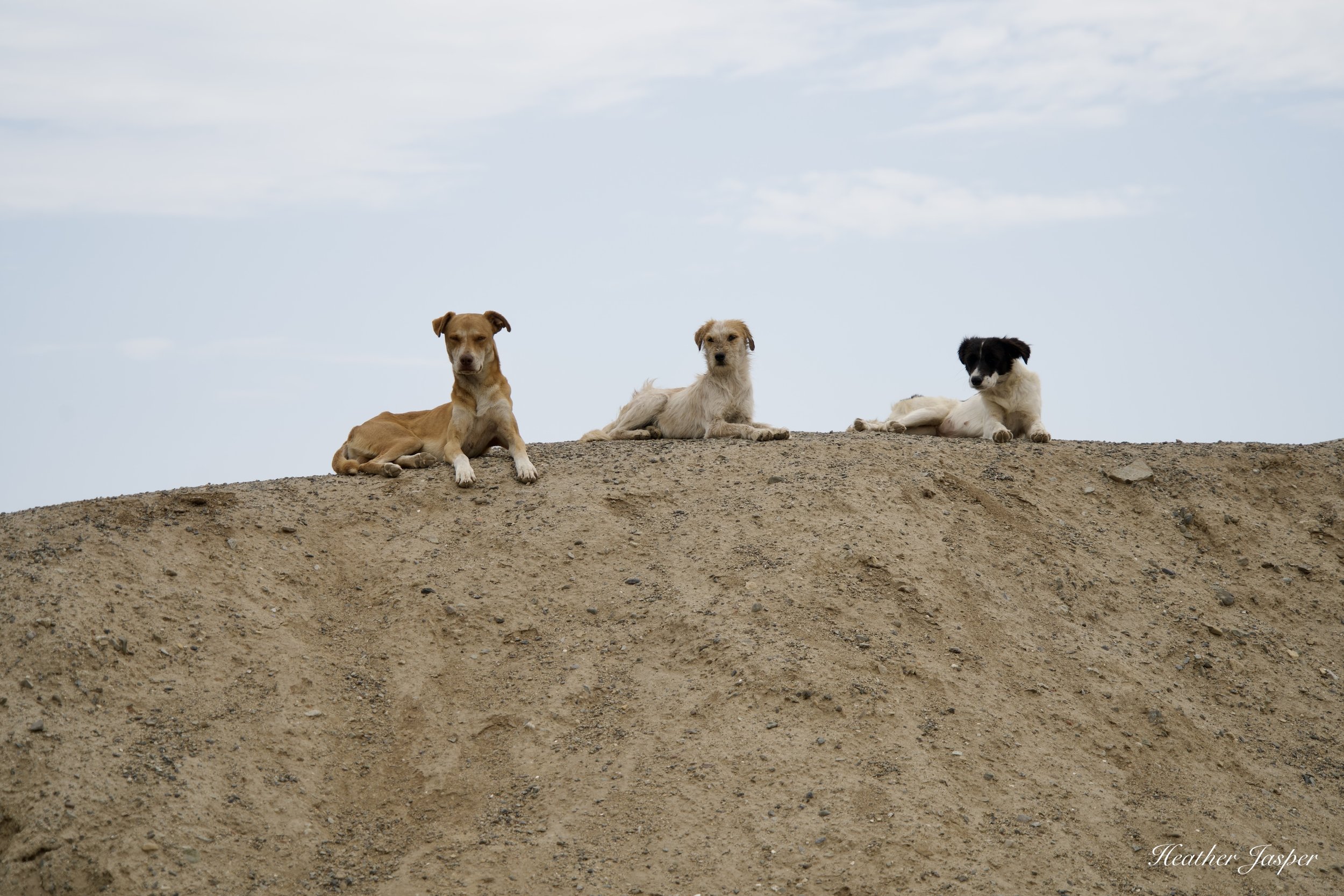

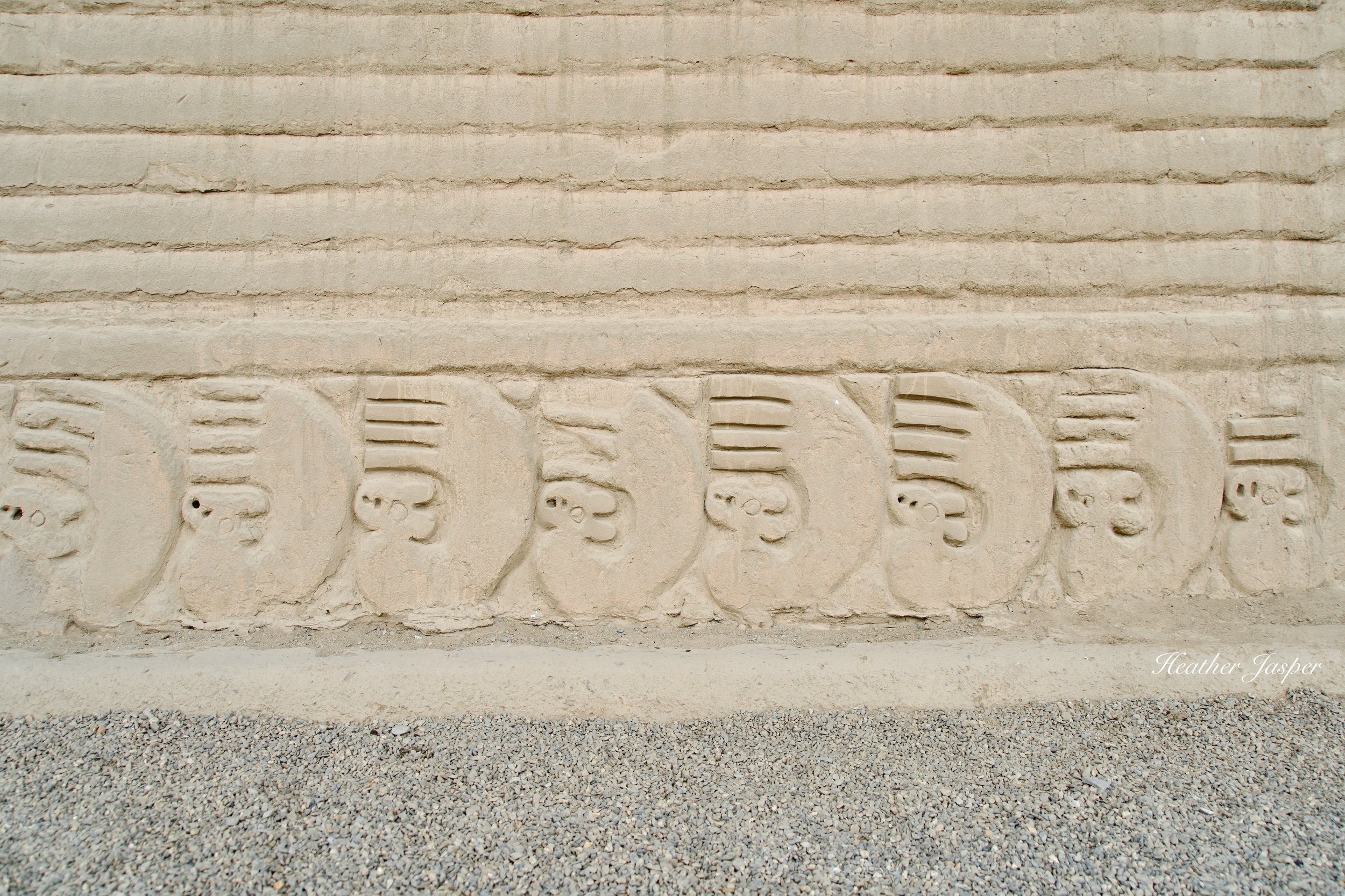
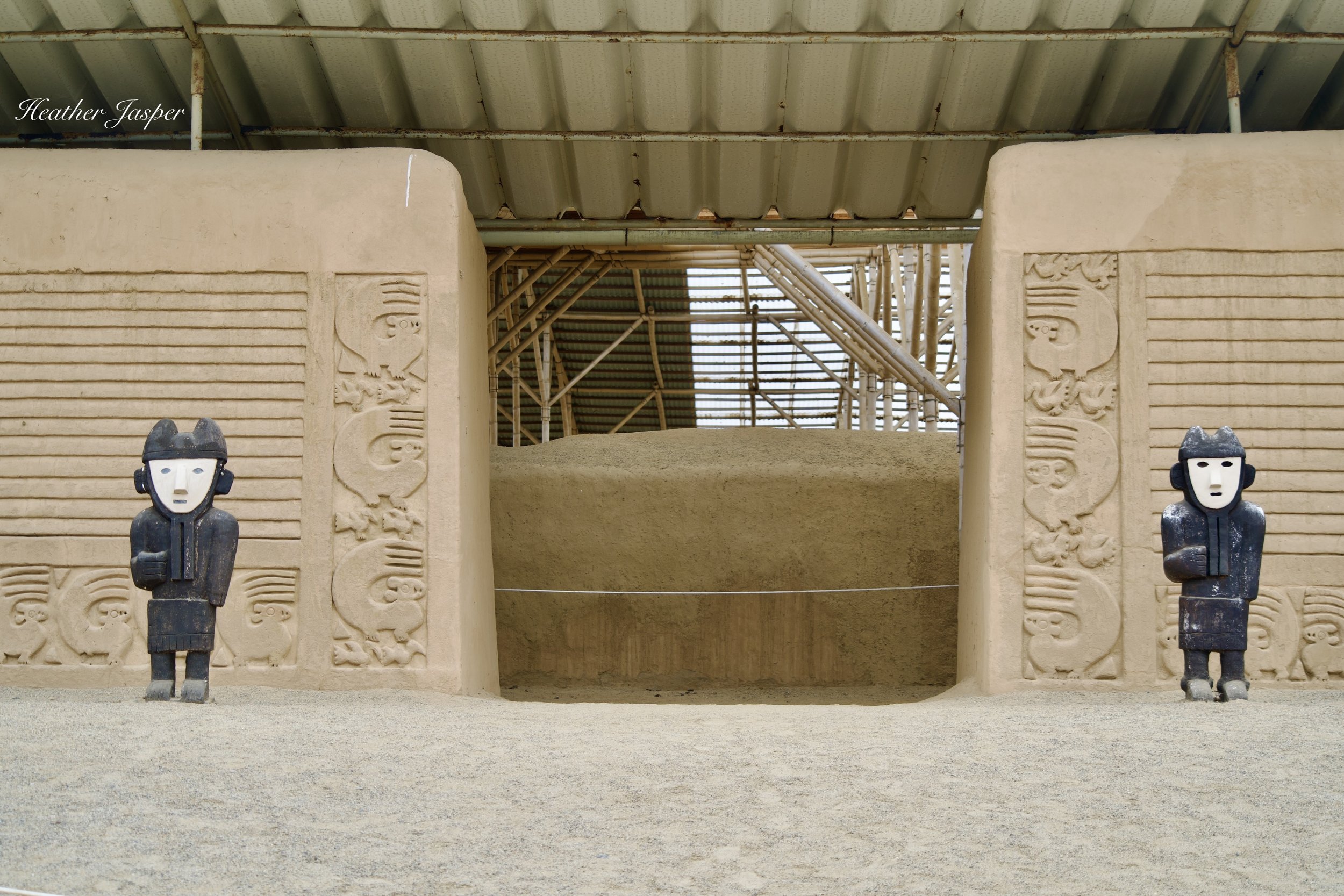
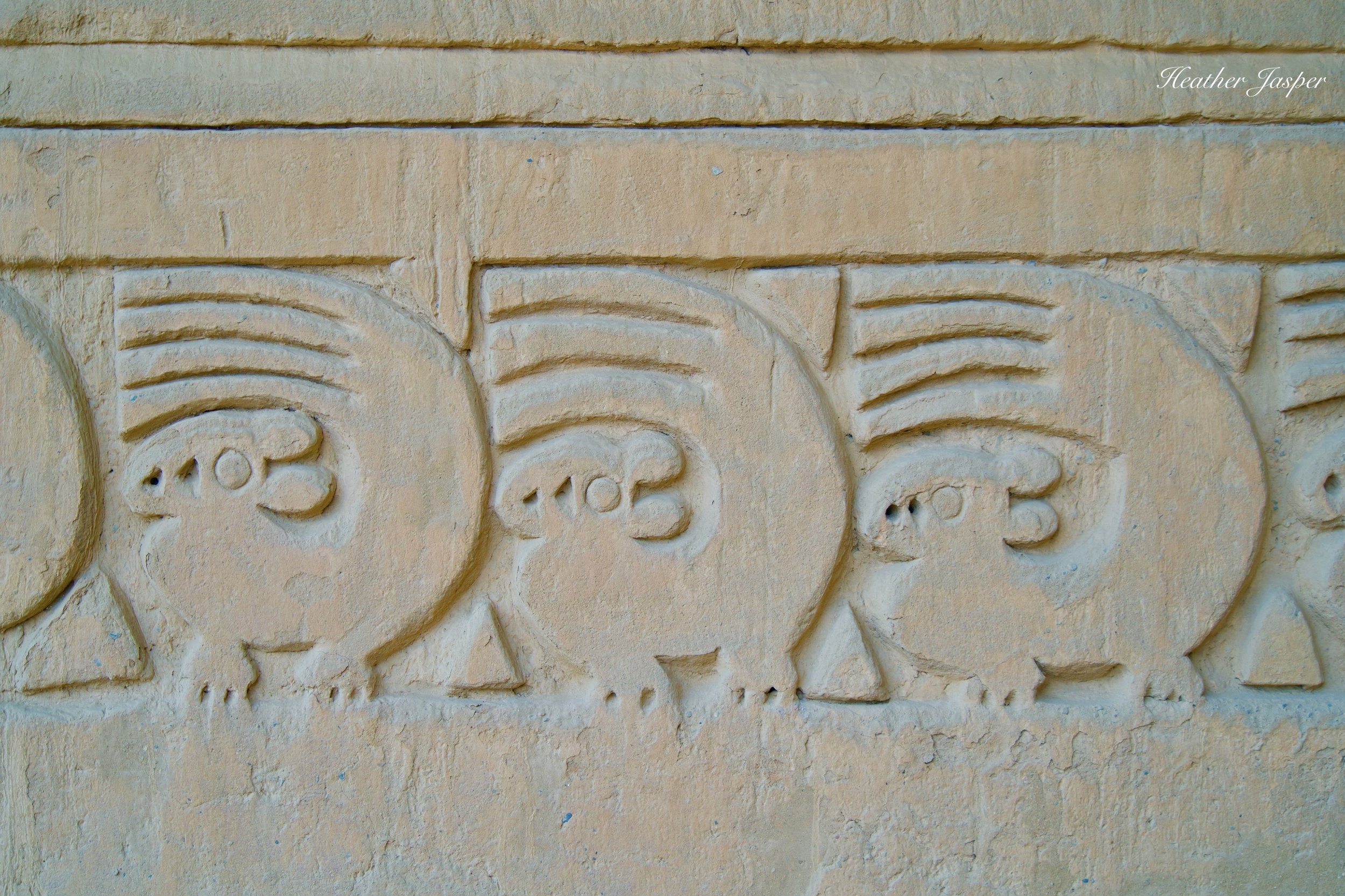
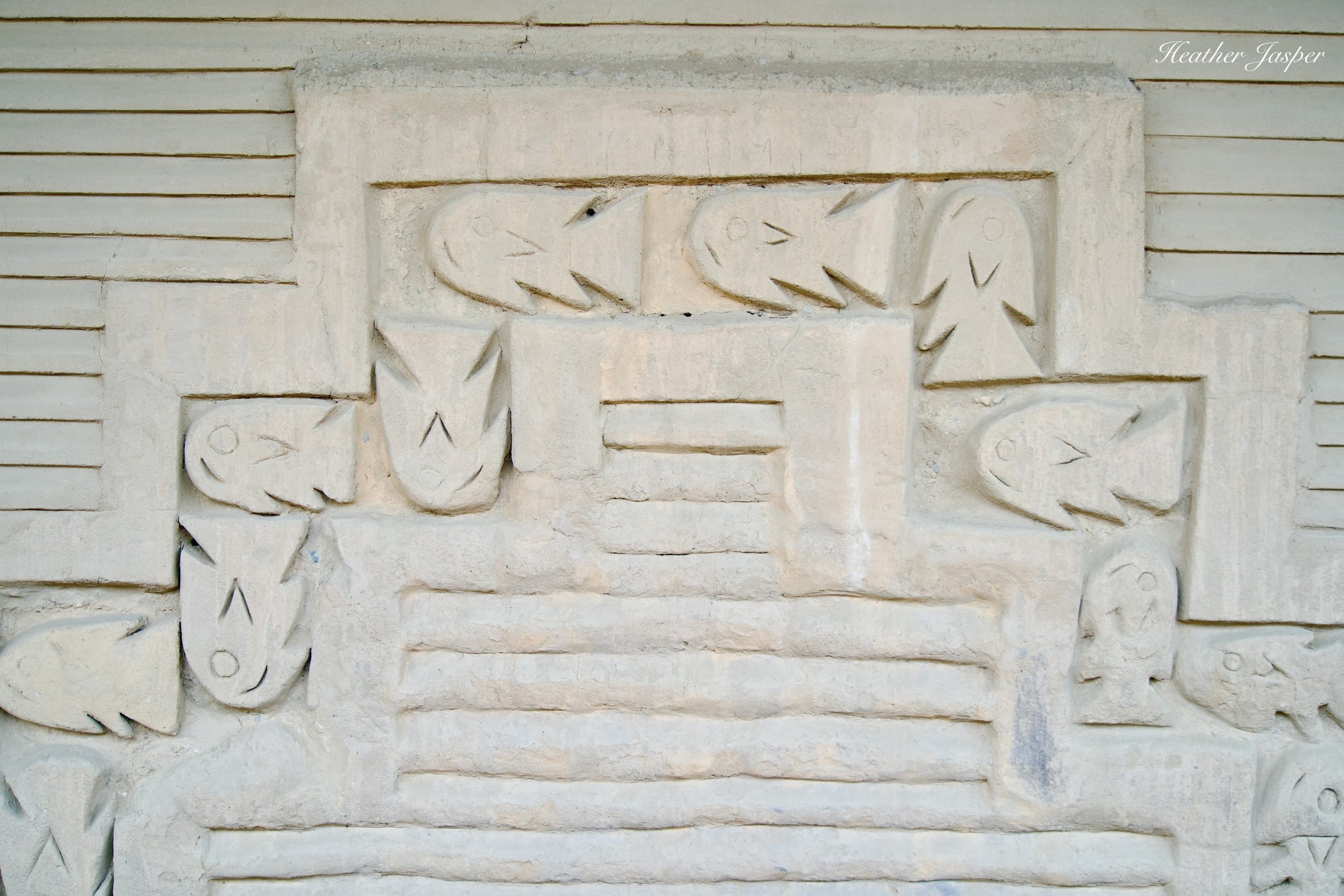
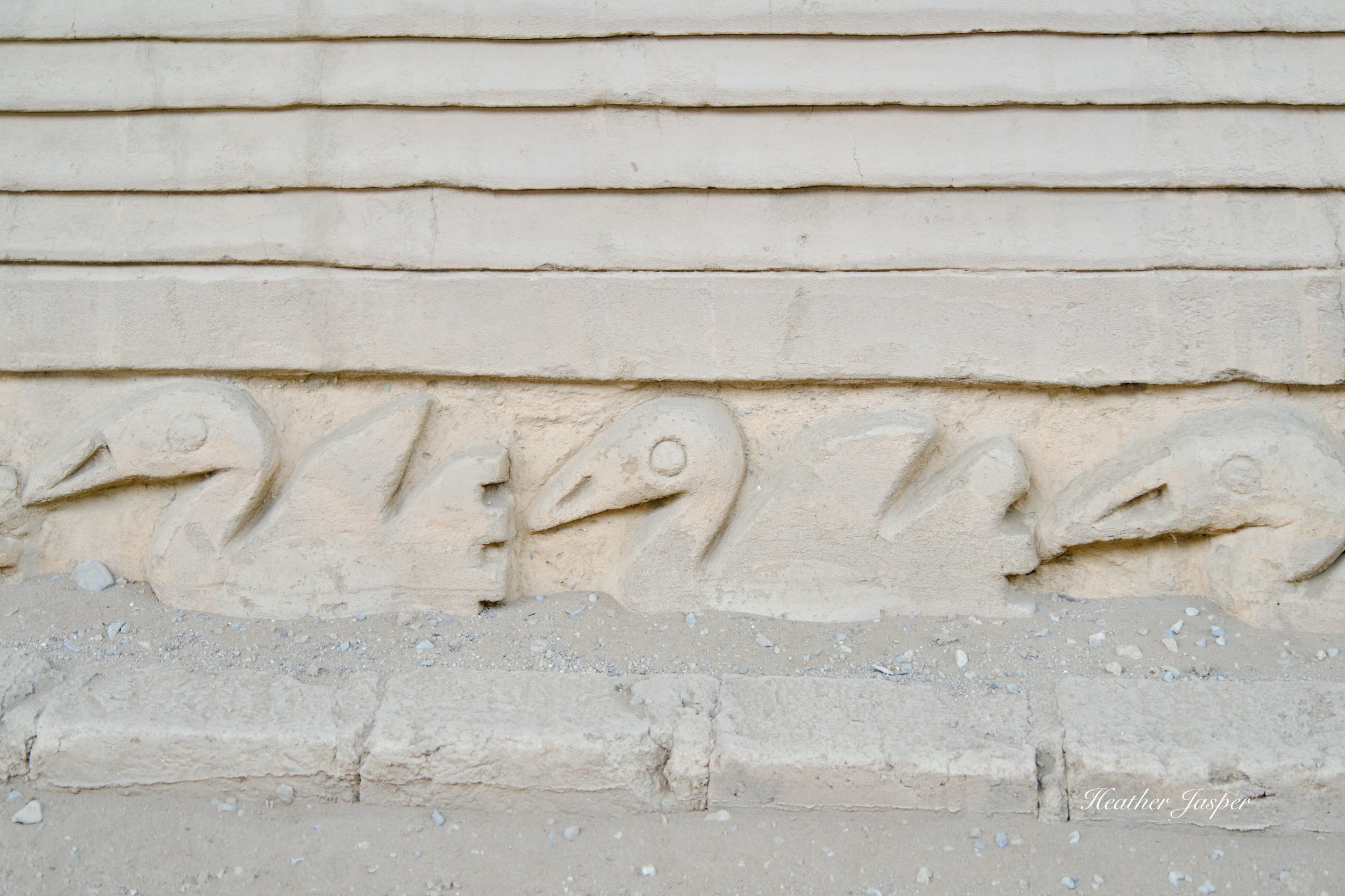
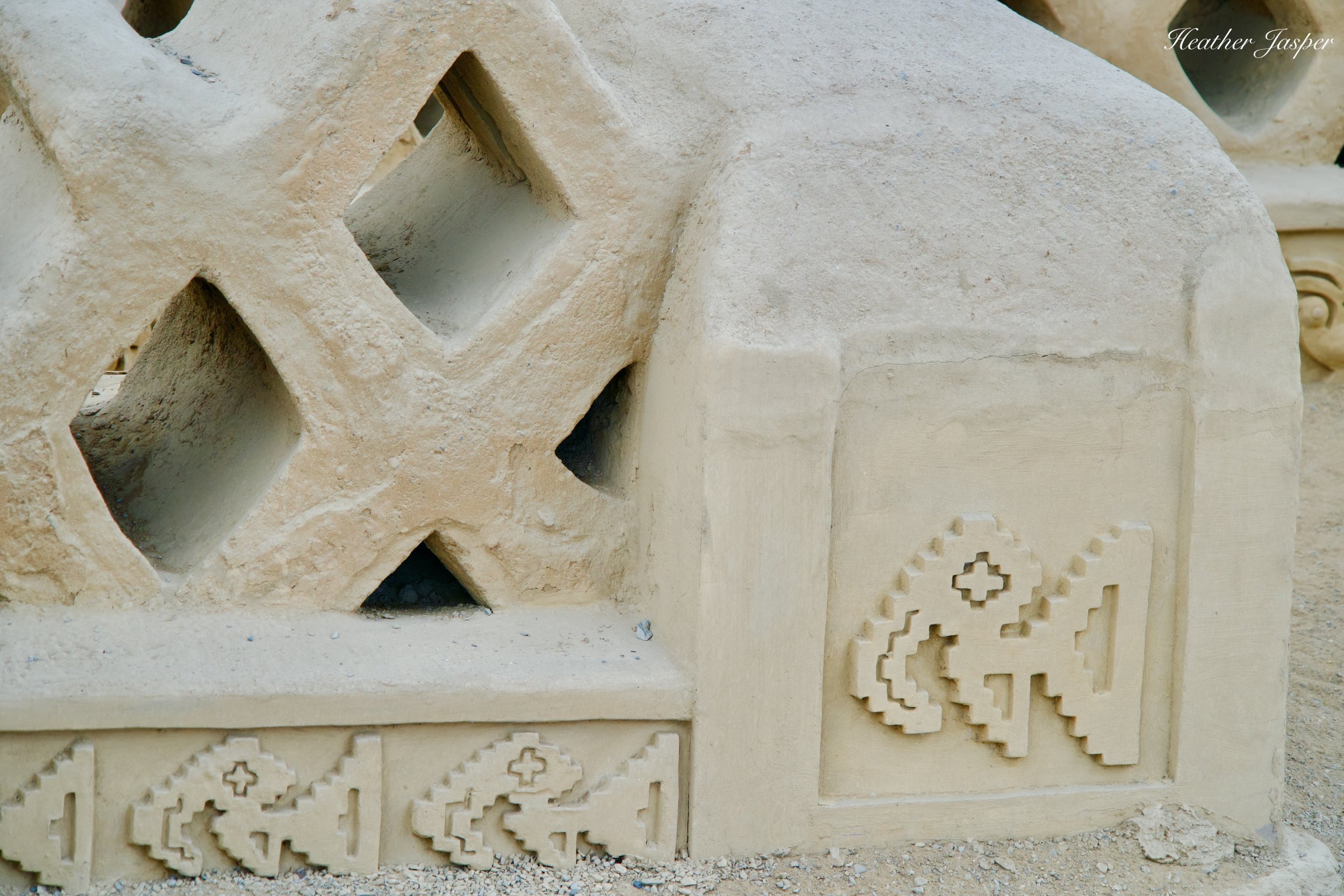
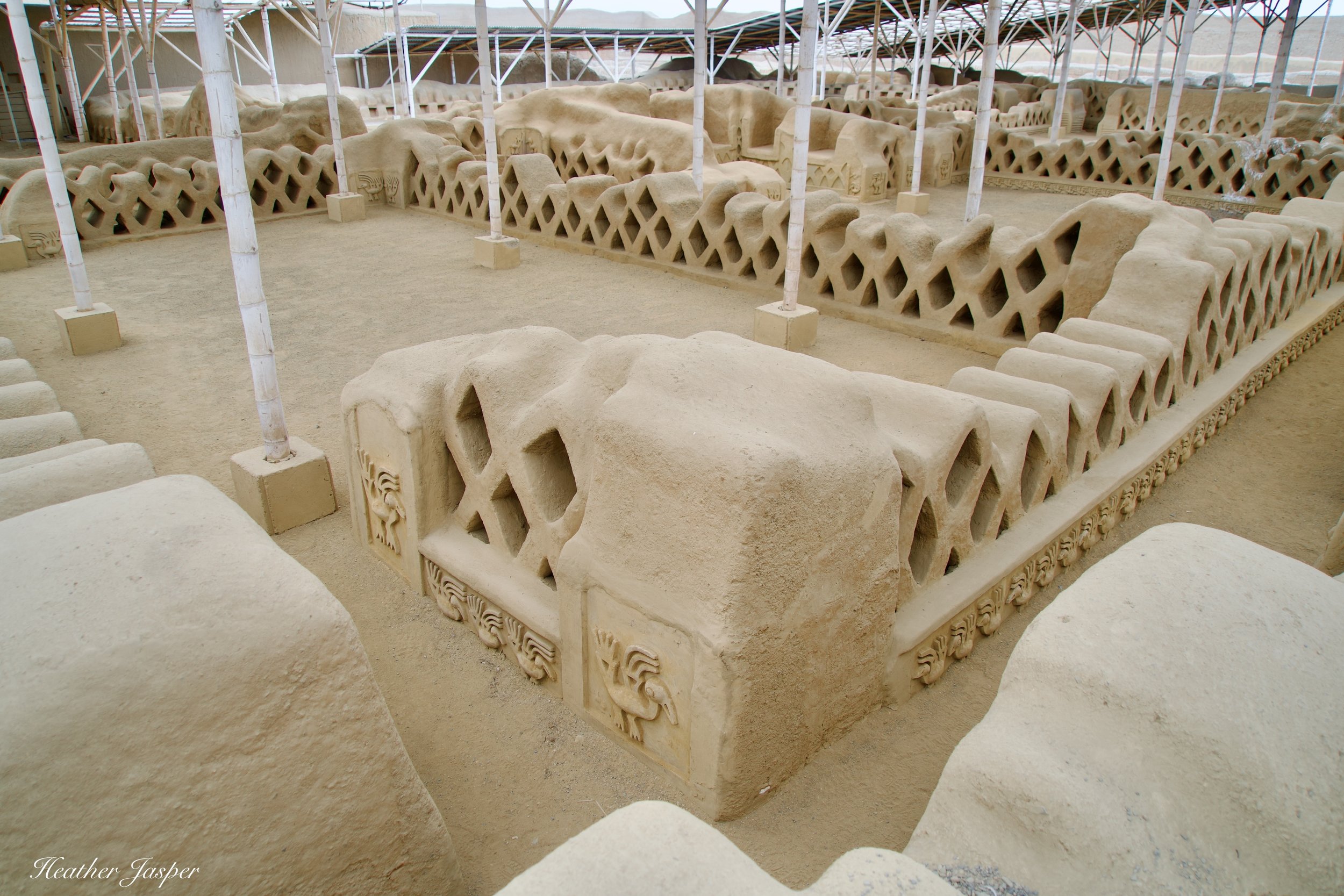
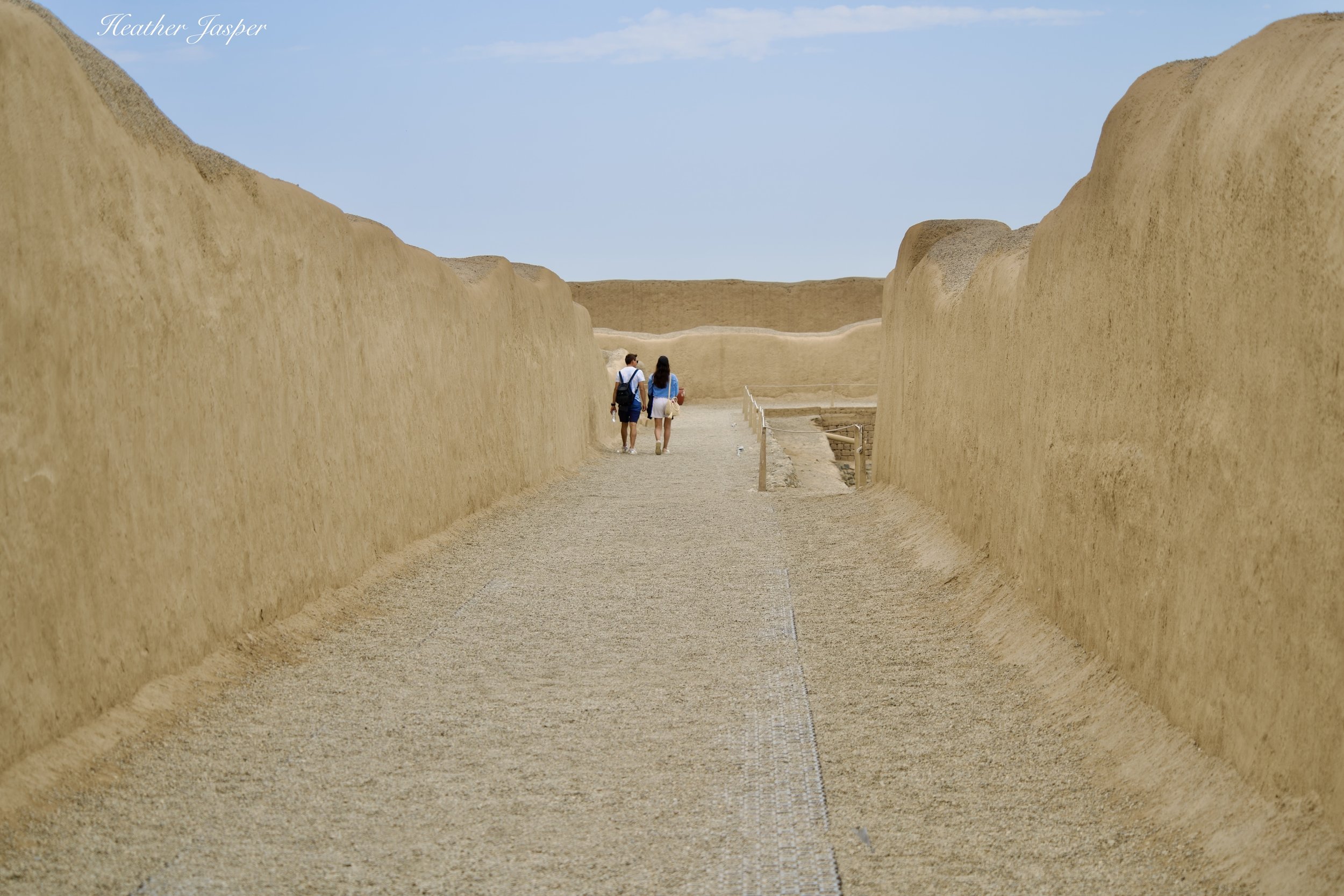
Even after all that, sections of the city were still inhabited in 1838 when archeologists Mariano Eduardo de Rivero from Lima and Jacob von Tschudi from Switzerland arrived.
They found a city of about 8 square miles (20km²) that still had functioning aqueducts bringing water to the desert coast from far away streams and mountains. The two archeologists made extensive maps of the city, documenting the nine citadels inside the outer walls, each with its own walls, temples, residential areas, and water sources.
Chan Chan means “City of the Sun” in Quignan, the language spoken before the Inca imposed Quechua. The Chimú dominated the region after conquering the Moche, who ruled the northern coast for the previous 600 years. The archeologists found burial chambers and evidence of human sacrifices throughout Chan Chan.
It doesn’t look like much today
But this was once a giant water source in the desert and what made Chan Chan such a great and self-sustaining capital for the Chimú. There are several places like this that used to be ponds and wells inside the city walls.
Today, what you see at Chan Chan is mostly restoration. Some of the massive walls are original, but most of the stylized and geometric adobe designs are recent. It’s interesting to see some of the city restored so you can imagine what it was like, but very little of what you’ll see at Chan Chan is original.
The much older Moche Huaca de la Luna is a different story.
From the outside, you can’t tell just how many treasures at Huaca de la Luna are protected from the elements.
The Huaca de la Luna was not a capital city, like Chan Chan was.
It was a temple used by the Moche (also called Mochica) culture from about 100-700CE. Even though it’s a lot older, what you see there is original. Archeologists have done amazing work excavating, but they didn’t need to do any restoration because everything was so perfectly preserved. How? Read on!
The Moche lived at about the same time as the Nazca who lived farther south along what is now the Peruvian coast. The Moche were less unified than the Chimú and some archeologists describe them as a confederacy of two regions, each with their own culture, language, and artistic styles.
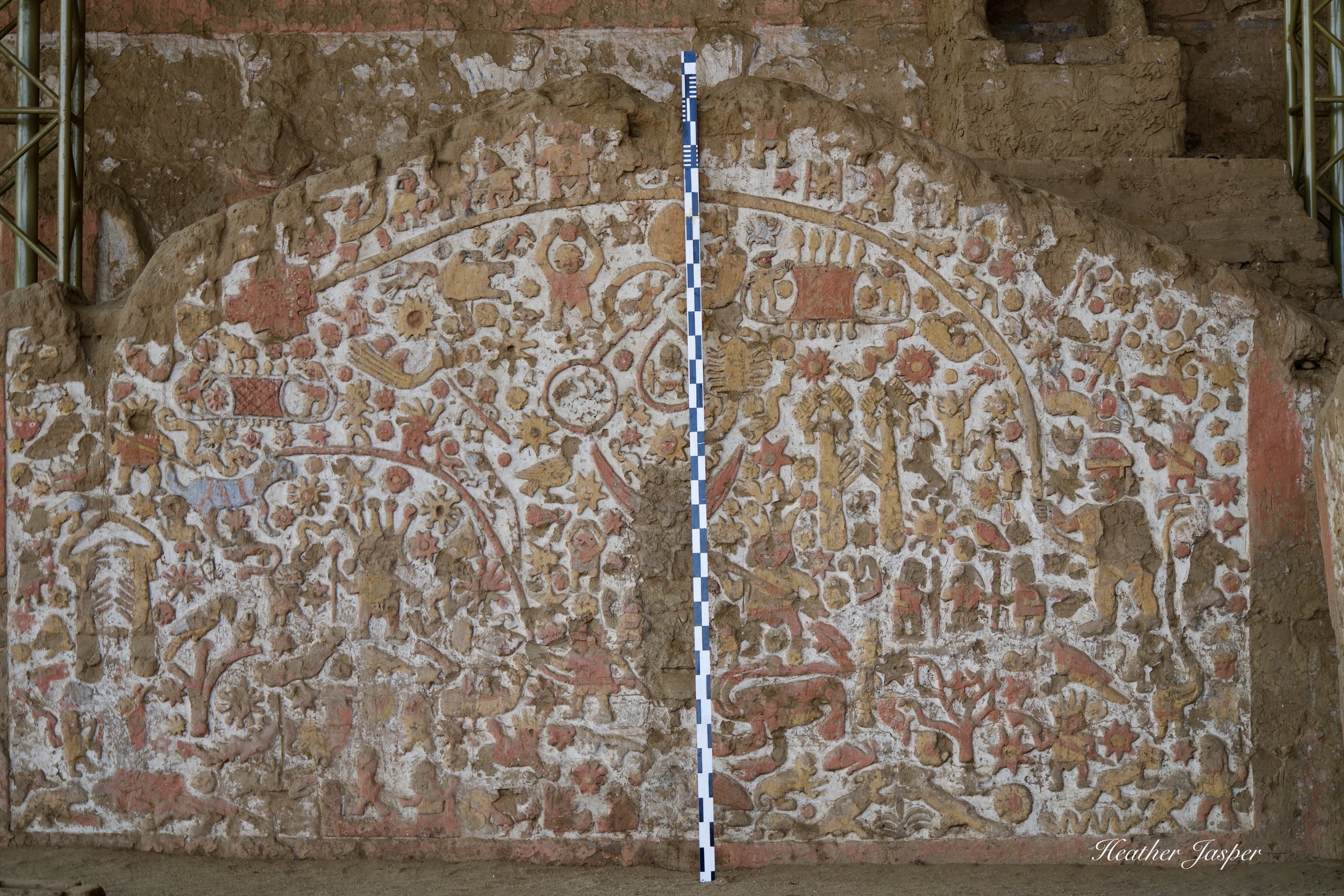
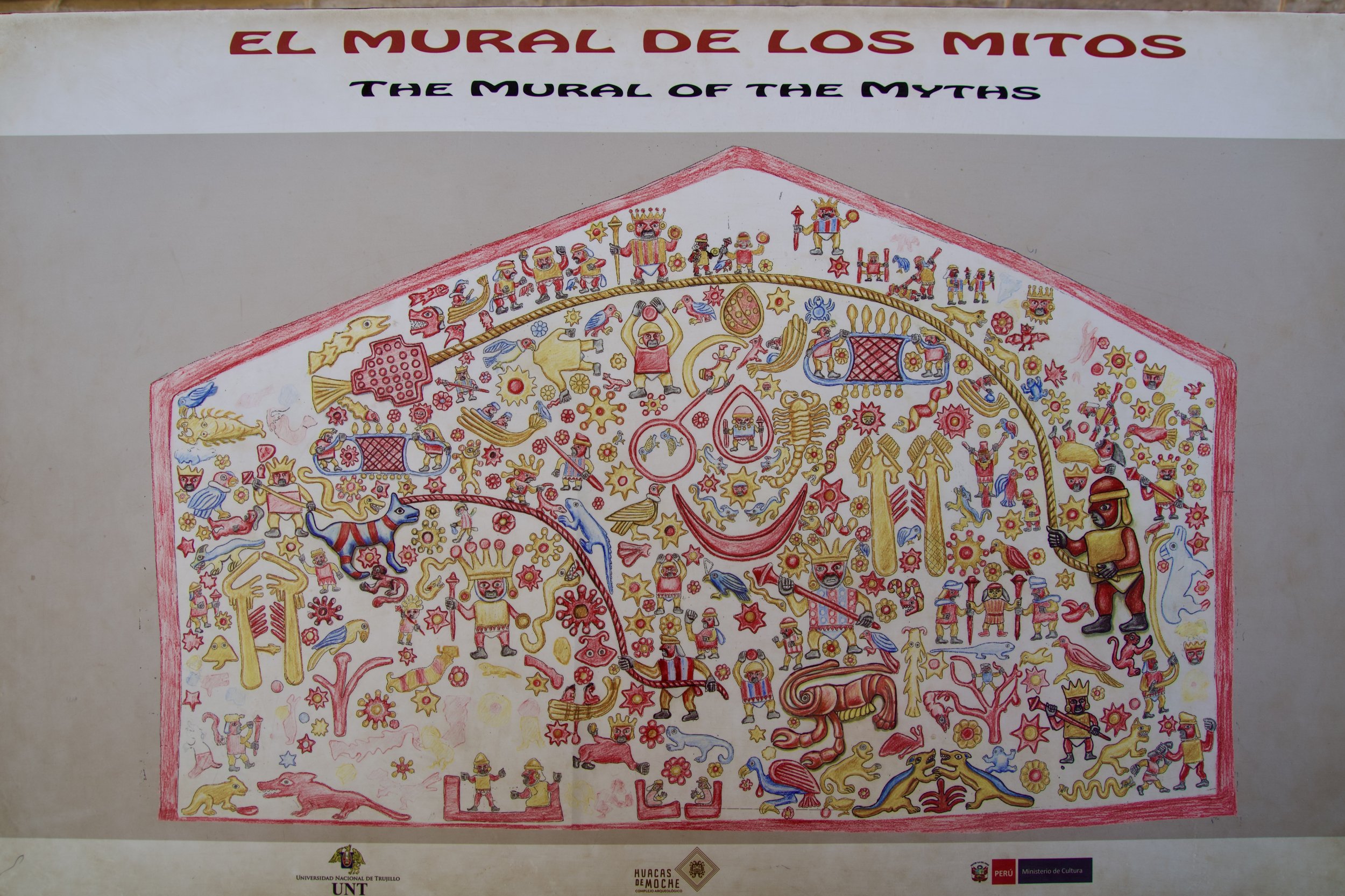
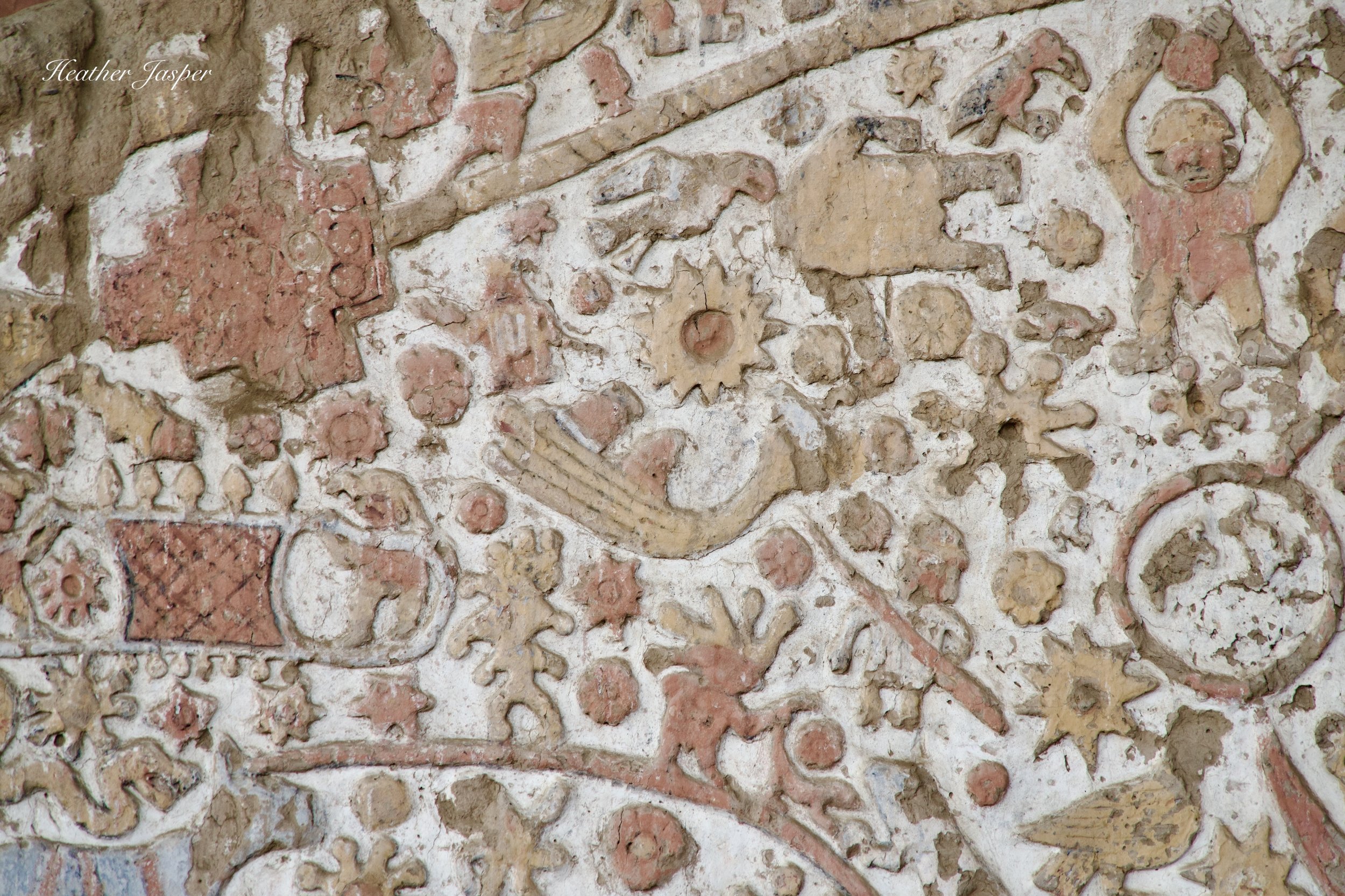

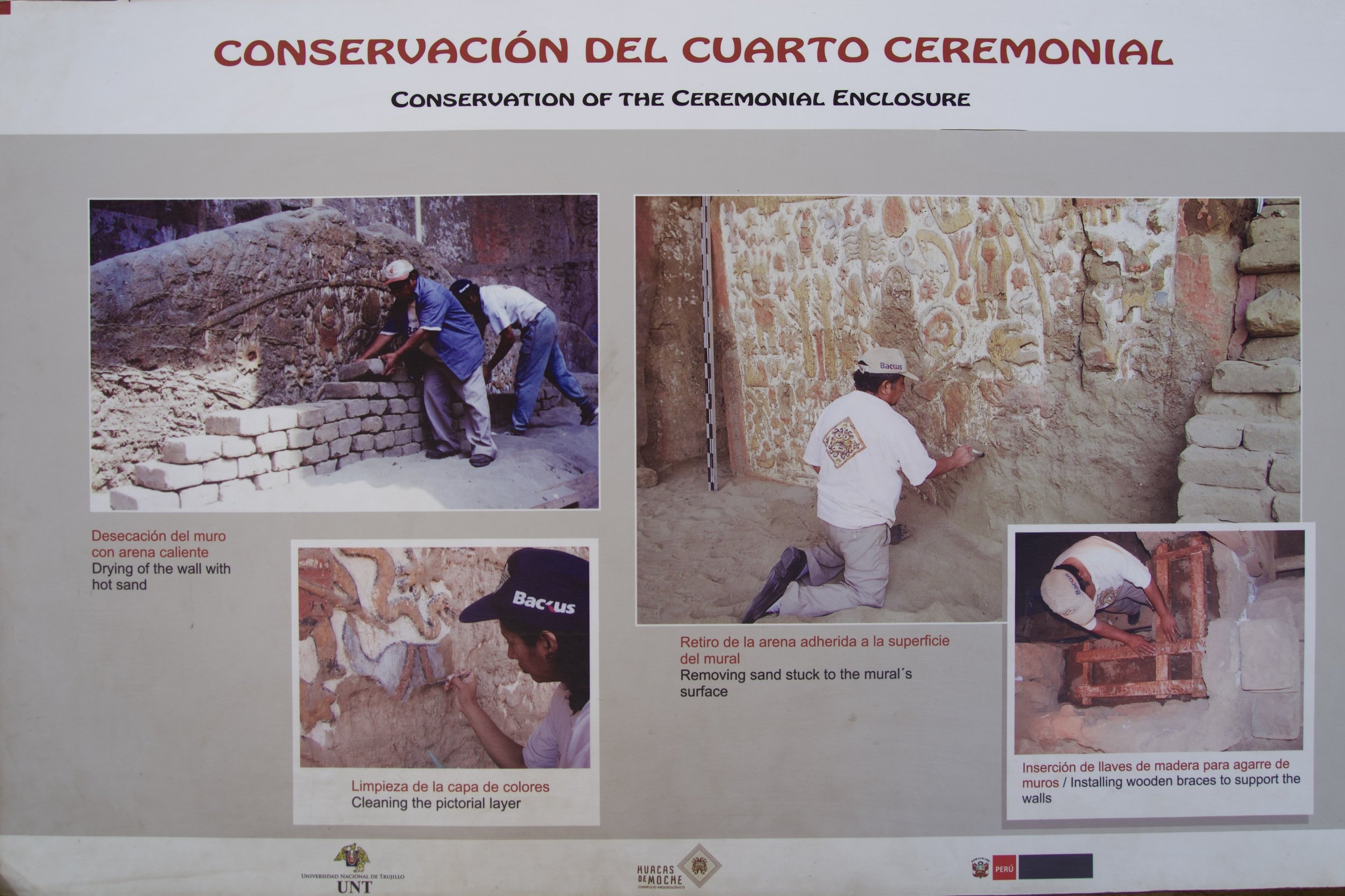
The mural of the myths
The Moche spoke Muchic in the north and Quignan in the south. They were prolific sculptors and thousands of their ceramics survived the Chimú, the Inca and later the Spanish. (The biggest collection of Moche ceramics, including their famous erotic ceramics, is at the Larco Museum in Lima).
Huaca is a Quechua word that means “sacred place” and de la luna is Spanish for “of the moon.” I couldn’t find anywhere that said what the place was called in Muchic or Quignan.
The Moche can be divided into five dynasties, each lasted just over a hundred years. We know quite a bit about these dynasties because each one built a temple at the Huaca de la Luna. Each temple was built on top of the previous one, perfectly preserving the former temple rather than destroying it. Archeologists estimated that after the fifth and final temple was built on top, the Huaca de la Luna was made of over 50 million adobe bricks, each stamped with a maker’s mark.
Moche use of caballito de totora
Though most Moche ceramics are carefully sculpted faces, animals, plants and sex acts, some of their older ceramics were painted.
This ceramic shows a person fishing from a caballito de totora, with a shark and jellyfish below. Read my blog about the caballito de totora and how it’s still used today.
The remains of Moche cities around the Huaca de la Luna show that about 25,000 people lived there. The residential areas are between the Huaca de la Luna, and the nearby Huaca del Sol. The Huaca del Sol is larger, but I was told that there wasn’t as much to see there. With only time for two archeological sites, I chose Chan Chan and Huaca de la Luna. The Huaca del Sol will have to wait for my next trip to Trujillo!
The moon goddess, called Si, was the supreme Moche deity.
The reason Huaca de la Luna has so much more to see is that Si was much more powerful than the creator god, called Al Paec. Si had more elaborate paintings at her temple. Human sacrifices were made at both temples, sometimes of war prisoners, but sometimes of Moche citizens. The third main Moche deity was a decapitator god that was half man and half jaguar.
The Moche may have made human sacrifices to appease El Niño.
My guide at Huaca de la Luna explained how ritual battles between groups of Moche warriors were always to the death. The losing warriors who were captured, rather than killed in battle, were sacrificed and archeologists have found ritual goblets for the blood of the sacrificed. It sounded a lot like Roman gladiator battles, though apparently this was more for appeasing the gods rather than for entertainment. Many piles of sacrificed bodies were found on top of evidence of rain and flooding. Peru’s northern coast is a desert and it only rains there during the El Niño phenomenon.
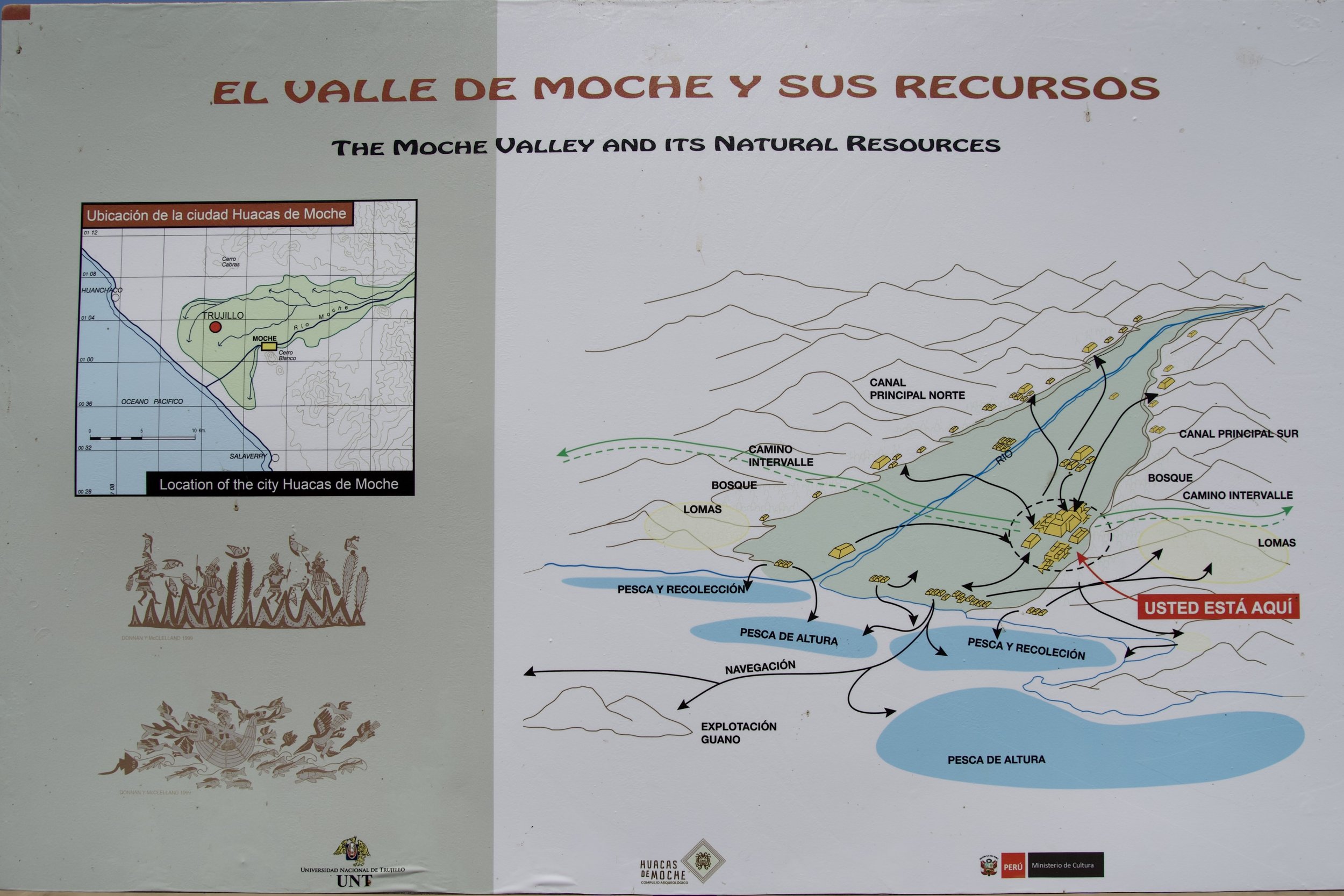
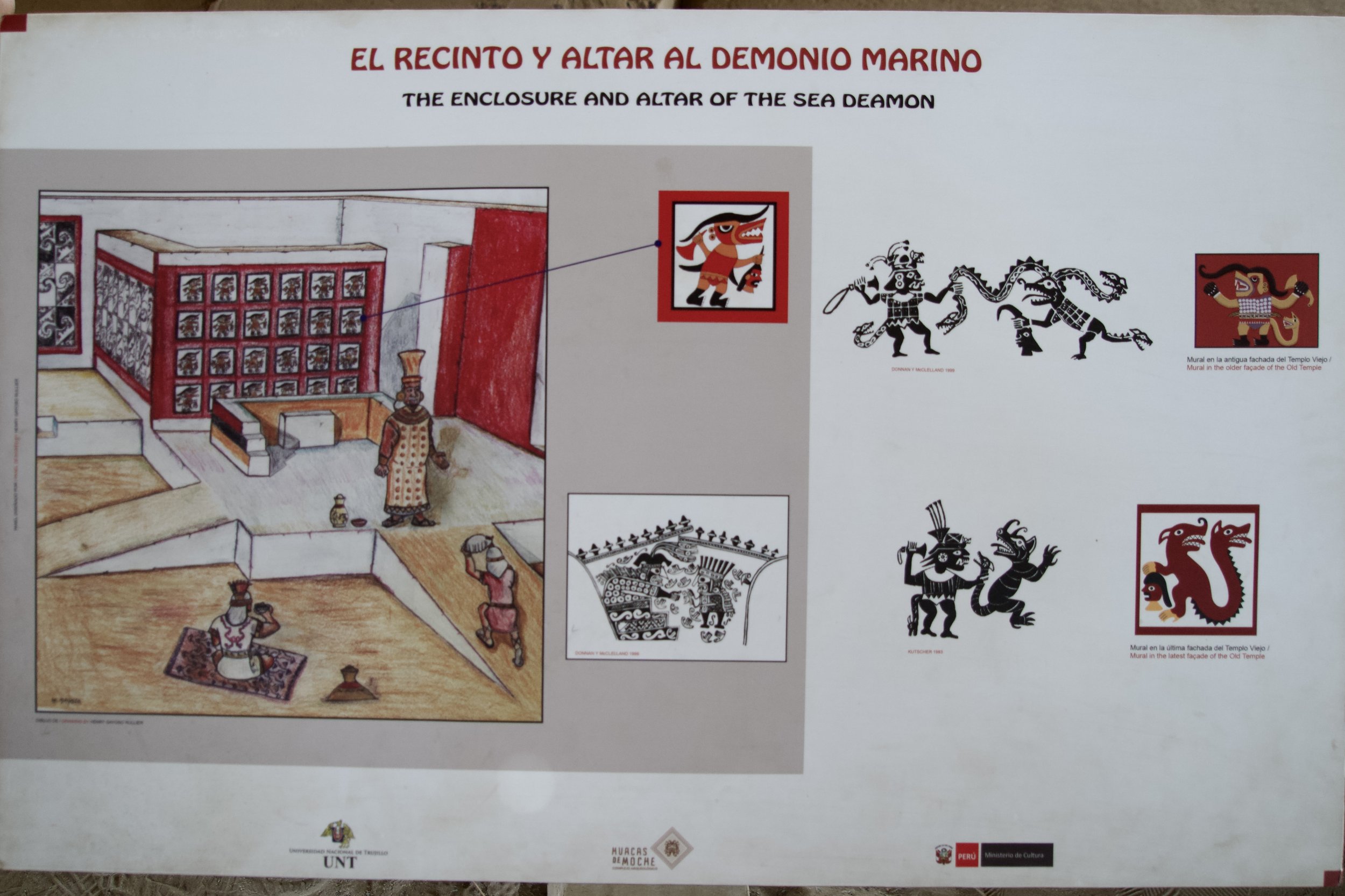
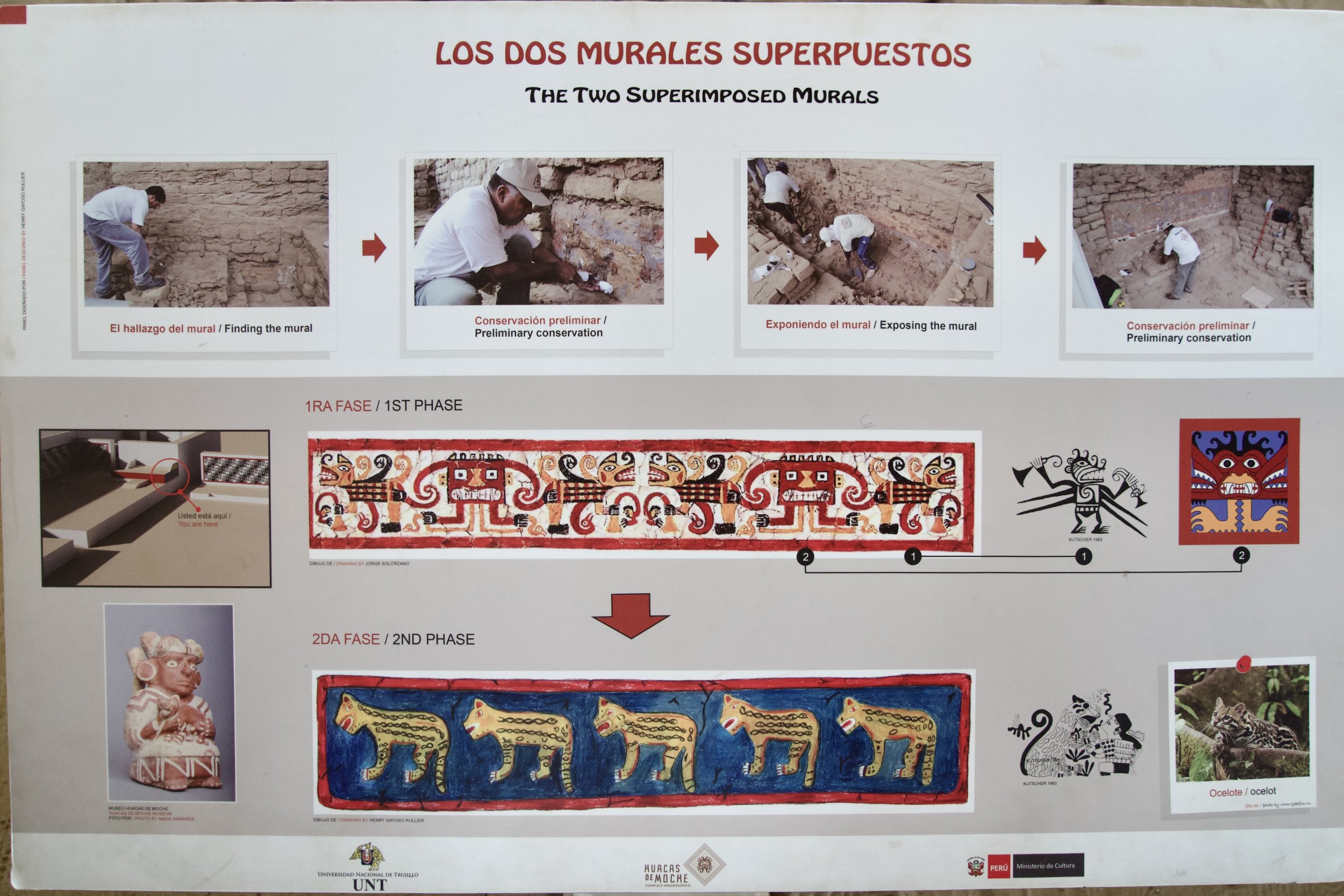
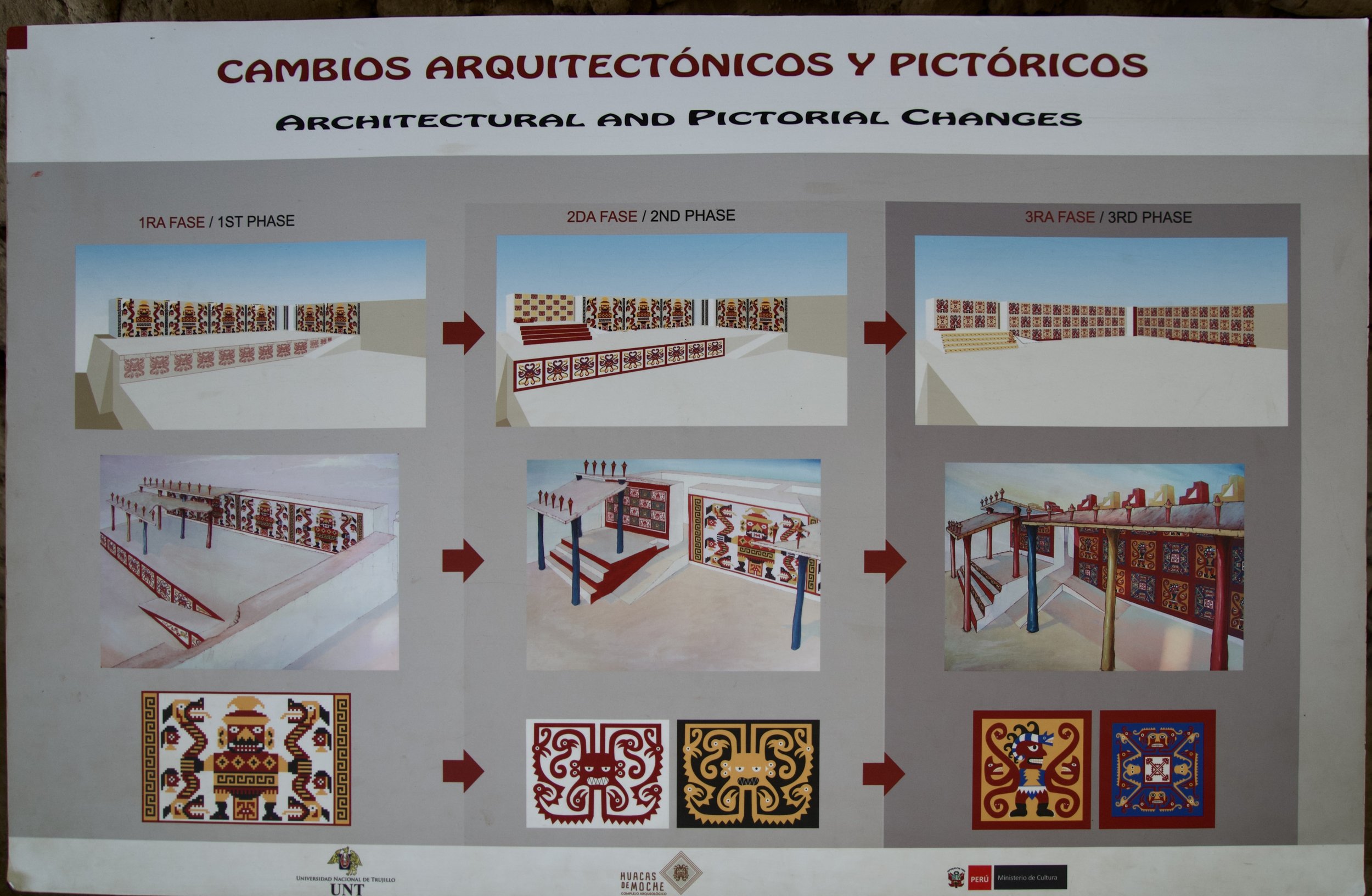
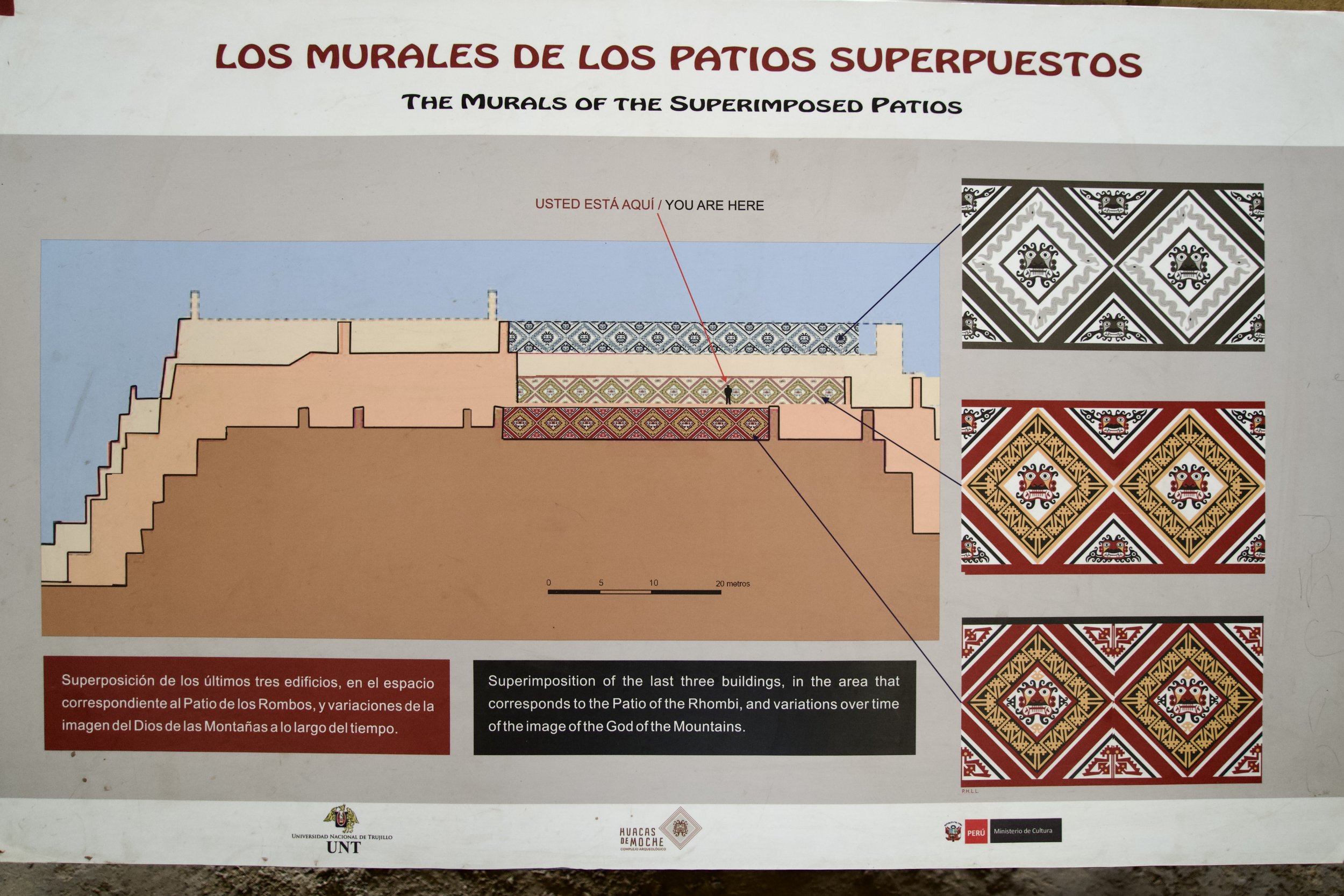
How to visit Chan Chan?
Guides are available at the entrance and I highly recommend getting a guide because once inside, there are no signs or plaques to explain what you’re seeing. Visit the museum first to have an idea what you’re looking at when you enter the archeological site.
How to get to Chan Chan?
Chan Chan is between Trujillo and the city’s airport. It’s just as easy to visit from Huanchaco as from Trujillo, so I recommend staying by the beach in Huanchaco.
How to visit the Huaca de la Luna?
Guides are required and groups leave every 45 minutes. The tickets are separate for the archeological site and the museum but I highly recommend both. If you have your own licensed guide you don’t have to go with a group.
How to get to Huaca de la Luna?
These are so close to town that any taxi will take you there. When you buy your tickets, ask when the next tour starts because if you have a lot of time to wait, you can see the museum first.

